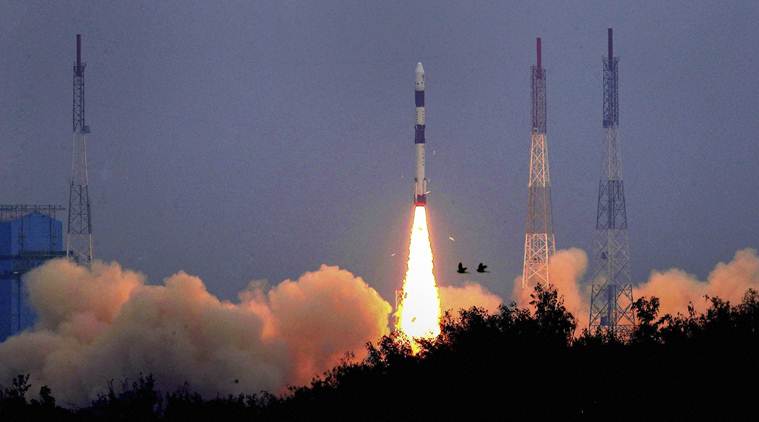Weighing about 5,854 kg, the GSAT-11, built by ISRO, is to enable much faster Internet services than now to users down home over the next 15 years.
As most of India slept, its heaviest and most advanced communication satellite, GSAT-11, was shot to space from a European spaceport in faraway South America.
The mission of the 5,854-kg giant 'bird' is to enable much faster Internet services than now to users down home over the next 15 years. GSAT-11 was launched from the Guiana Space Centre at Kourou in French Guiana at 2.07 a.m. IST on Wednesday, December 5.
The large high-throughput satellite (HTS), along with two smaller HTS satellites GSAT-19 and GSAT-29 launched earlier (by ISRO from Srihsrihkota) will kick off effective satellite-based broadband services in remote, hitherto uncovered rural areas of the country. These and a few more upcoming HTS fleet will also innovatively enable the use of the superior and efficient Ka frequency band.
The lift off of GSAT-11 and a South Korean co-passenger satellite on European pace vehicle Ariane 5 VA246 was watched and cheered by the Chairman of Indian Space Research Organisation K. Sivan. In his post-launch remarks Dr. Sivan said: "It will meet most of the requirements of providing broadband connectivity to rural and inaccessible village panchayats under BharatNet which is part of the Digital India initiative."
With him at the space port were P. Kunhikrishnan, Director of the U.R.Rao Satellite Centre in Bengaluru which built the satellite; GSAT-11 Mission Director P.K. Gupta and many ISRO engineers who accompanied the satellite from Bengaluru to Kourou in late October.
GSAT-11, described by the space agency as a giant satellite, is the heaviest ever built by ISRO. (Its next biggest is the GSAT-17, weighing 3,477 kg and which was also launched for ISRO in June 2017 by the same European launch operator Arianespace.)
The new 'big bird' adds 40 more transponders, 32 in the Ku band and eight in the Ka band being introduced newly in an Indian satellite. Indian Internet users are estimated at over 450 million, apart from various businesses, bank ATM services and public organisations, with a growing appetite for ever speedier and better broadband services.
Enabling in-flight Internet and village web services are the government's other goals. By enabling rural high-speed connectivity the HTS satellite also promises to bridge the urban-rural digital divide.
The space agency described GSAT-11 as a "forerunner in the series of advanced communication satellites with multi-spot beam antenna coverage" over the mainland and islands. "GSAT-11 will play a vital role in providing broadband services across the country. It will also provide a platform to demonstrate new generation applications."

Comments
Post a Comment